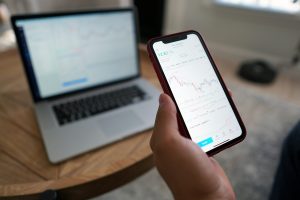Thinkorswim is one of the most powerful trading platforms that can be used for trading stocks, options, futures, and Forex. One of the important features of the platform is its ability to offer traders leverage, which can be used to increase profits and lower risk. We will be describing how to set Forex leverage on thinkorswim in this article.
What Is Leverage?
Forex leverage is the use of borrowed funds to increase the potential Return On Investment (ROI). Leverage is essentially borrowed capital that allows traders to control a larger position than their account balance would normally permit. It is usually expressed as a ratio, such as 1:50 or 1:200, where the first number denotes the real amount of capital you have and the second number denotes the amount you can control. Leverage of 1:100, for example, allows you to control $100 for every $1 in your trading account.
Leverage, though, can also raise the likelihood of suffering a loss. A trader could lose all of their investment if they are utilizing a leverage of 100:1 and the market goes against them by just 1%. As a result, it is very important to use leverage carefully and understand the risks involved.
Setting Forex Leverage On Thinkorswim
1. Log In To Your Thinkorswim Account
You have to first log in to your thinkorswim account, and if you don’t have one already, you need to open an account with thinkorswim. This involves providing your personal information and completing any necessary verification processes.
2. Navigate The Forex Trading Section
Once your account is set up and verified, log in to your thinkorswim platform. Click on the “trade” tab at the top of your screen and select Forex from the drop-down menu.
3. Choose Your Currency Pair
From the drop-down menu, select the currency pair you want to trade. Each pair may have different available leverage options, so make sure to choose the one that agrees with your trading strategy.
4. Examine Your Risk Management
Your risk tolerance, trading background, and general financial condition should all be taken into consideration when deciding on leverage. Higher leverage can result in more profits, but it also puts you at greater risk of suffering greater losses. Choose lower leverage if you are new to trading.
5. Set Your Leverage
To set your leverage on the platform, you will find an option to adjust your leverage which appears as a gear icon on the top right corner of your screen. The available leverage levels could range from 1:10 to 1:500 or more.
Set the leverage to the desired level using the platform. The platform will automatically determine the necessary margin for the leverage you have selected. Margin is the amount of money you need to set aside in your account to open and maintain a leveraged position.
Click on “save” after this process.
From 50:1 to 200:1, Thinkorswim provides a variety of leverage options for Forex trading. However, depending on the currency pair being traded and the trader’s account balance, the exact leverage provided may vary.
It is essential to remember that only margin accounts, which require traders to keep a minimum amount of capital in their account at all times, allow for the use of leverage. The broker may issue a margin call and ask the trader to deposit more money to maintain the position if the account balance falls below the minimum requirement.
Conclusion
In Forex trading, leverage can be a potent strategy that increases your exposure to market fluctuations. It does, however, come with some risks. It is important to evaluate your risk tolerance, and level of experience before adjusting leverage on thinkorswim. Consider your financial condition carefully while using leverage, and make a commitment to keep learning about the particulars of trading. These instructions and advice will help you maximize the benefits of leverage while protecting your trading capital.





